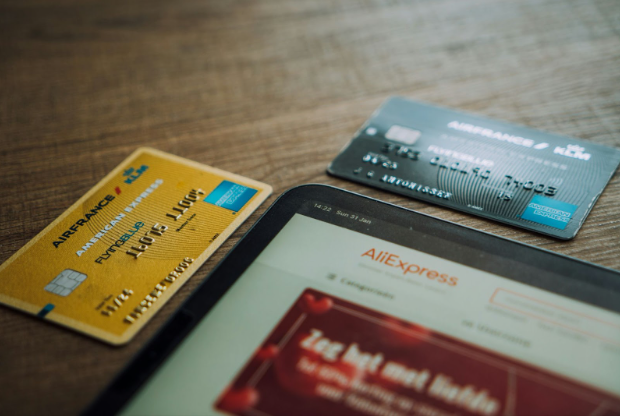How The Briansclub Hacking Incident Changes Cyber Security

The Briansclub CM hack has served as a wake-up call for cybersecurity experts and consumers. It underscores the need for businesses and individuals to take preventive steps against cyber attacks.
Briansclub CM has become known as an online marketplace that has sold stolen credit card details since 2015. Reportedly, briansclub sells details for 26 million payment cards that have been taken from both physical and online retailers since 2015.
1. Cybercriminals are now able to infect people with ransomware via social media platforms
Briansclub cm was one of the largest black market sites specializing in trading stolen credit card information, collecting details of over 26 million payment cards stolen from online and brick-and-mortar retailers over four years and offering them for sale on this platform. Most card details offered included strings of ones and zeroes that could be encoded to enable online purchases when encoded properly.
This site offered several tools designed to aid criminals in carrying out their schemes, such as Track1Generator and My Bins. These tools allow criminals to track bank and geographical card origins for targeting specific targets, while My Bins allows criminals to bypass anti-virus software detection by tracking specific bank BINs, allowing criminals to bypass cyber security measures altogether.
Due to this breach, many individuals are now at risk of ransomware infections. Cybercriminals can infiltrate users via social media with malware that can steal private data and demand ransom payments in return. It’s crucial that people become aware of these risks and take measures to safeguard themselves.
The Briansclub cm hacking incident has had an enormously profound effect on cybersecurity industry professionals, prompting them to review their strategies and learn from past errors.
2. The Briansclub hacking incident has forced cybersecurity experts to reevaluate their strategies
Briansclub cm is an underground market where criminals can buy stolen credit cards and banking information. The massive data breach at Briansclub cm has had serious repercussions for financial institutions and their customers, forcing cybersecurity experts to reconsider their strategies in order to protect consumers better and prevent future cyberattacks.
According to KrebsOnSecurity, one website amassed 26 million stolen cards over four years and earned over $126 million from buyers of stolen credit and bank card data sold. Furthermore, its hackers also generated strings of zeroes and ones that could be encoded onto anything accepting payments using credit cards.
As a result of Briansclub cm’s data breach, there has been an increase in identity theft and financial fraud. Cybersecurity experts were forced to review their systems in order to safeguard sensitive data, such as multi-factor authentication or strengthening encryption protocols – all measures implemented through regular penetration tests as preventative measures against potential cyberattacks.
Individual consumers can help reduce the effects of the Briansclub cm data breach by taking proactive steps, including regularly checking bank statements for suspicious activity and employing two-factor authentication wherever possible. Furthermore, they should make sure their passwords are strong and unique.
3. The Briansclub hacking incident has forced financial institutions to strengthen their security measures
BriansClub, an online “carding store” known for selling stolen credit card data, was compromised, and its data leaked out to multiple sources. The breach affected over 26 million credit and debit card records that were uploaded over four years to BriansClub – with nearly 8 million of those records uploaded this year alone. Financial institutions often work with multiple sources who identify or monitor cards appearing for sale on criminal forums.
The breach also revealed weaknesses in some banks’ security measures, which cybercriminals have taken advantage of to conduct illegal transactions on bank accounts, resulting in both financial losses and identity theft. As a result, several financial institutions have strengthened their security protocols following this incident.
Briansclub cm has implemented multi-factor authentication to enhance login security and enhanced encryption protocols to safeguard data during transmission and storage. Furthermore, they regularly conduct penetration tests to identify any vulnerabilities that malicious actors might exploit.
This attack is thought to have been undertaken by a notorious hacking group known as FIN7, who have been linked with numerous high-profile hacks in recent years and likely attempted this attack as part of their ongoing campaign to target financial institutions for phishing and ransomware schemes.
4. The Briansclub hacking incident has forced cybersecurity experts to reevaluate their strategies
As cybersecurity threats evolve and increase in severity, so does the threat of hacking. Briansclub cm’s massive data breach has forced cybersecurity experts to revisit their strategies and take measures against future risks.
At this underground market, you can find everything from “dumps” to CVV2 codes – an essential three-digit number used to validate credit card transactions encased on a magnetic stripe of cards – making them invaluable resources for cybercriminals looking to make illegal purchases online or commit other forms of financial fraud.
Briansclub cm has taken measures to address this problem by implementing multi-factor authentication and strengthening encryption protocols to safeguard customer data. They conduct regular penetration tests that simulate real-world cyber attacks against their systems in order to identify any weak points and pinpoint weaknesses, in addition to creating a team dedicated to monitoring and responding immediately to cyber threats as they occur.
The briansclub cm Dealer Account Hack has had an enormous effect on the security of sensitive information, such as credit card data, as well as consumer trust in businesses. Now more than ever before, consumers expect companies to demonstrate transparency and take proactive measures against emerging threats while also taking personal steps themselves to mitigate risks and remain safe, for example, by monitoring bank accounts regularly and employing two-factor authentication when necessary.

